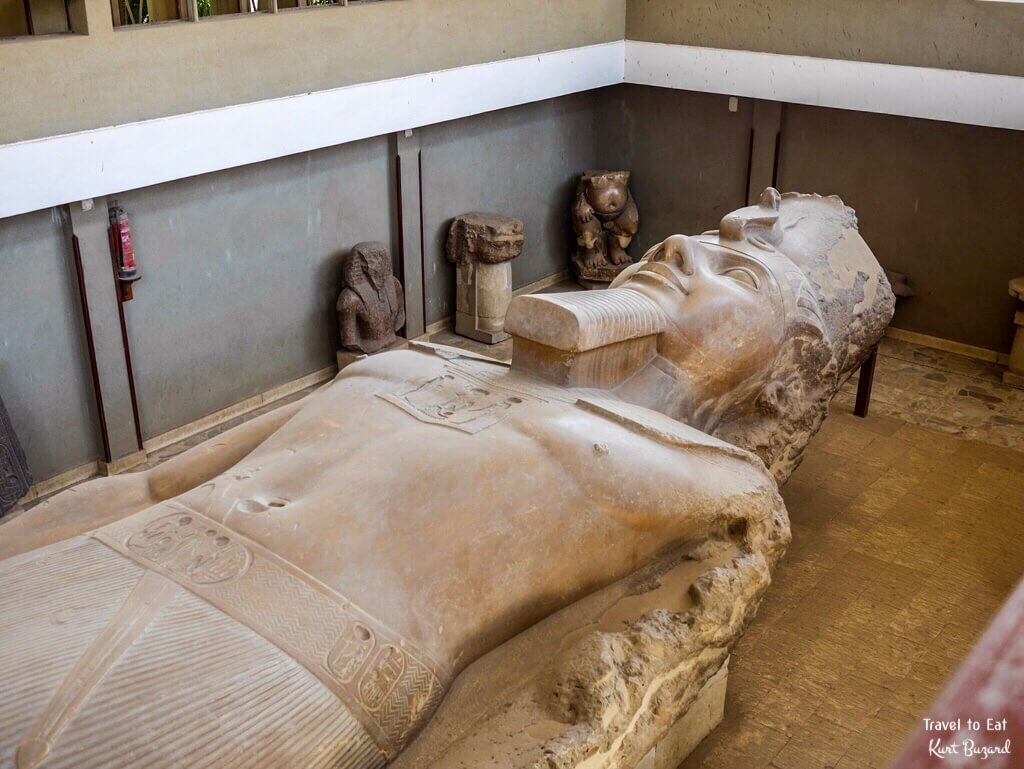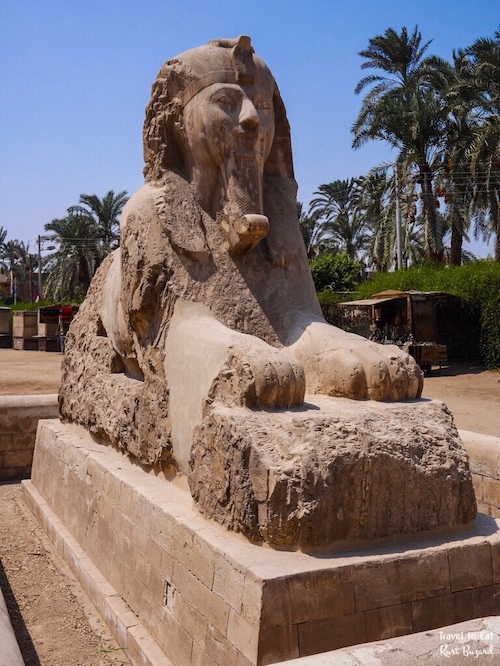
Memphis, founded around 3,100 BC, is the legendary city of Menes, the King who united Upper and Lower Egypt. Early on, Memphis was more likely a fortress from which Menes controlled the land and water routes between Upper Egypt and the Delta. Having probably originated in Upper Egypt, from Memphis he could control the conquered people of Lower Egypt. However, by the Third Dynasty, the building at Saqqara suggests that Memphis had become a sizable city. Memphis has had several names during its history of almost four millennia. Its Ancient Egyptian name was Inbu-Hedj (translated as “the white walls”. Memphis became the capital of Ancient Egypt for over eight consecutive dynasties during the Old Kingdom. The city reached a peak of prestige under the 6th dynasty as a centre for the worship of Ptah, the god of creation and artworks. The alabaster sphinx that guards the Temple of Ptah serves as a memorial of the city’s former power and prestige. The Memphis triad, consisting of the creator god Ptah, his consort Sekhmet, and their son Nefertem, formed the main focus of worship in the city.
Sphinx of Memphis

The Sphinx of Memphis is a stone sphinx located near the remains of Memphis, Egypt. The carving was believed to take place between 1700 and 1400 BC, which was during the 18th dynasty. It is unknown which pharaoh is being honored and there are no inscriptions to supply information. The facial features imply that the Sphinx is honoring Hatshepsut or Amenhotep II or Amenhotep III.
Mit Rahina
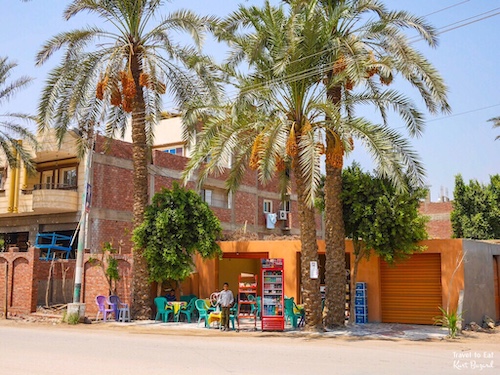

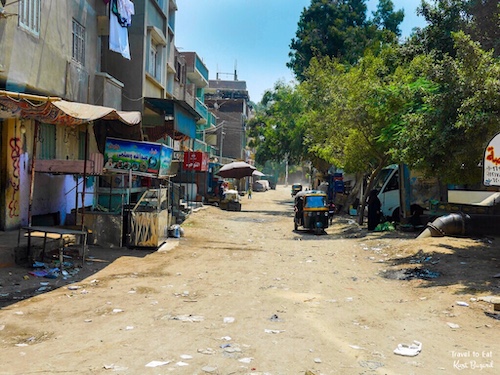
The city of Memphis is 20 km (12 mi) south of Cairo, on the west bank of the Nile. Memphis had some 30,000 inhabitants and was by far the largest settlement worldwide from the time of its foundation around 2250 BCE until from 1557 to 1400 BCE. The history of Memphis is closely linked to that of the country itself. Its eventual downfall is believed to be due to the loss of its economic significance in late antiquity, following the rise of coastal Alexandria. Its religious significance also diminished after the abandonment of the ancient religion following the Edict of Thessalonica. There is little left of the city today, at least that can be seen. Originally, the city had many fine temples, palaces and gardens. But today, other than the scattered ruins, most of the city is gone, or lies beneath cultivated fields, Nile silt and local villages. What we do know of Memphis comes to us from its necropolises, text and papyrus from other parts of Egypt and Herodotus, who visited the city. The fraction we can see of Memphis today is located principally around the small village of Mit Rahina.
Memphis Triad
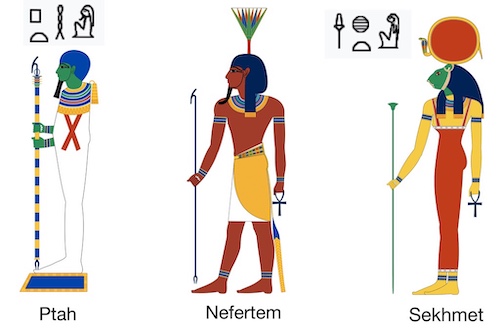
The people of Memphis believed that their god Ptah was the most ancient and pre-eminent of all the gods. Ptah was seen as the creator of all the other gods, the sun, and was responsible for the ripening of vegetation. The gods of Heliopolis were considered to be just forms or manifestations of Ptah. He was called the “heart and tongue” of the Ennead. To the Egyptians, the heart and tongue were the seat of the human soul and intellect. Ptah was said to be superior to Atum who created his Ennead “by his semen and his fingers”. The Memphis triad, consisting of the creator god Ptah, his consort Sekhmet, and their son Nefertem, formed the main focus of worship in the city. Sekhmet also spelled Sakhmet, Sekhet, or Sakhet, among other spellings, means “the powerful one” is a warrior goddess as well as goddess of healing. She is depicted as a lioness, the fiercest hunter known to the Egyptians. It was said that her breath formed the desert. She was seen as the protector of the pharaohs and led them in warfare. Nefertum or Nefertem was, in Egyptian mythology, originally a lotus flower at the creation of the world, who had arisen from the primal waters. Nefertem represented both the first sunlight and the delightful smell of the Egyptian blue lotus flower, having arisen from the primal waters within an Egyptian blue water-lily, Nymphaea caerulea.
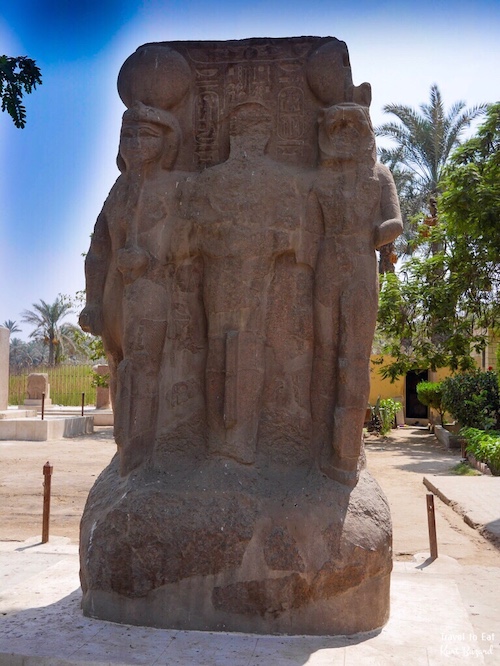
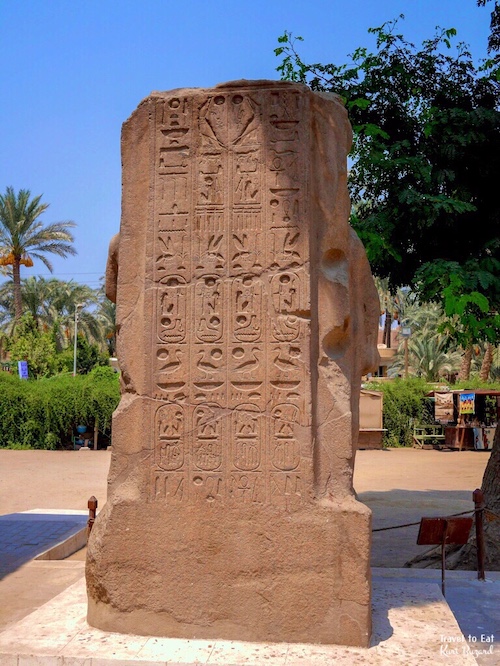
The Memphis triad, consisting of the creator god Ptah, his consort Sekhmet, and their son Nefertem, formed the main focus of worship in the city. Here we see a New Kingdom triad with Rameses II surrounded by Ptah and Sekhmet. There is evidence that, under Ramesses II, the city developed new importance in the political sphere through its proximity to the new capital Pi-Ramesses. The pharaoh devoted many monuments in Memphis and adorned them with colossal symbols of glory. Merneptah(r. 1213–1203 BC), his successor, constructed a palace and developed the southeast wall of the temple of Ptah. For the early part of the 19th dynasty, Memphis received the privileges of royal attention, and it is this dynasty that is most evident among the ruins of the city today.
Memphis Museum
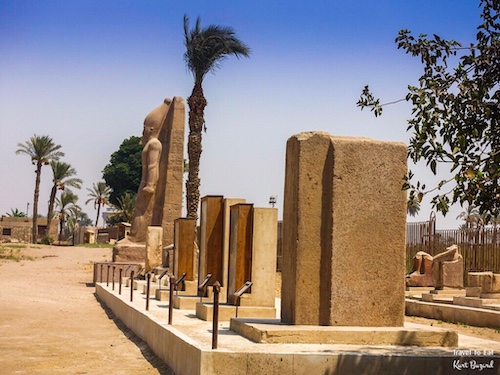
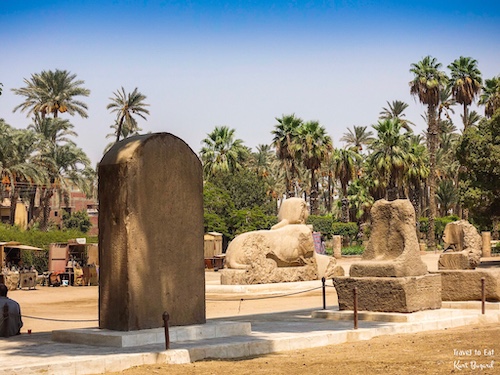
The scraps and pieces of Memphis are collected in this small museum. A millennium before Sumer, three millennia before Rome, Memphis was the first truly cosmopolitan metropolis and now it is just gone. Cannibalized by Cairo, looted by the populace, the palaces, the city and the very location have been lost to history.
Colossus of Rameses II
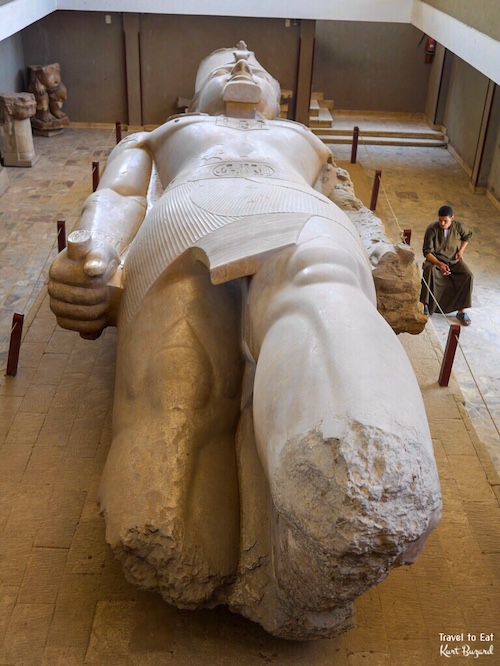
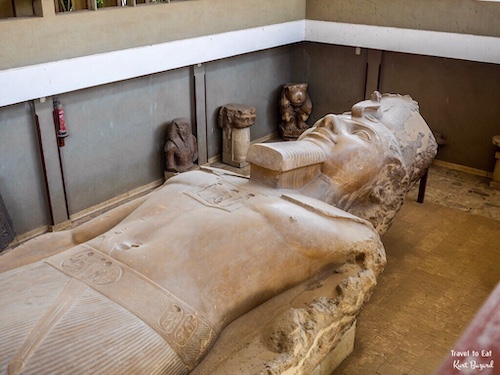
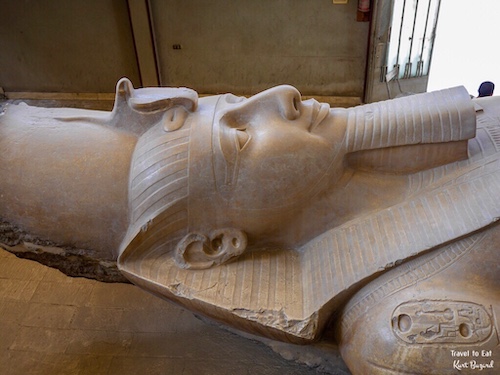

By far the most impressive piece in Memphis is the Colossus of Ramesses II. The Colossus of Rameses is an enormous statue carved in limestone. It is about 10m (33.8 ft) long, even though it has no feet, and is located near the village of Mit Rahina. A small museum in Memphis has been built to house this magnificent piece. The fallen colossus was found near the south gate of the temple of Ptah, located about 30 meters from the huge limestone statue of Ramesses. Some of the original colors are still partly preserved. This piece was found in 1820 by an Italian traveler Giovanni Caviglia. Mohammad Ali donated the statue to the British Museum, but the task of moving the piece prevented the British from taking it to England. It is located in the archaeological zone of Memphis in the museum built to protect it.
Pyramid Fields of the West Bank of the Nile
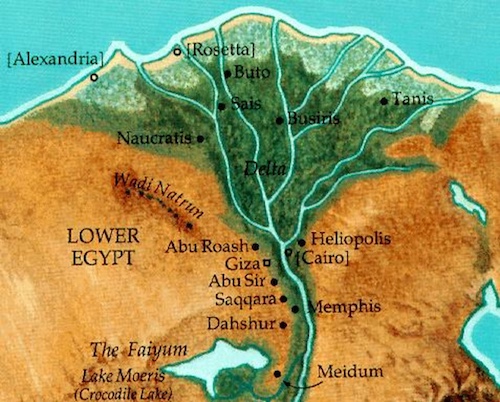
The most prolific pyramid-building phase coincided with the greatest degree of absolutist rule in Egypt. It was during this time that the most famous pyramids, the Giza pyramid complex, were built. Over time, as authority became less centralized, the ability and willingness to harness the resources required for construction on a massive scale decreased, and later pyramids were smaller, less well-built and often hastily constructed. All of Egypt’s pyramids, except the small Third Dynasty pyramid of Zawyet el-Amwat (or Zawyet el-Mayitin), are sited on the west bank of the Nile, and most are grouped together in a number of pyramid fields. The northernmost is Abu Roash, the Giza, Abu Sir Saqqara and finally Dahshur.
Saqqara
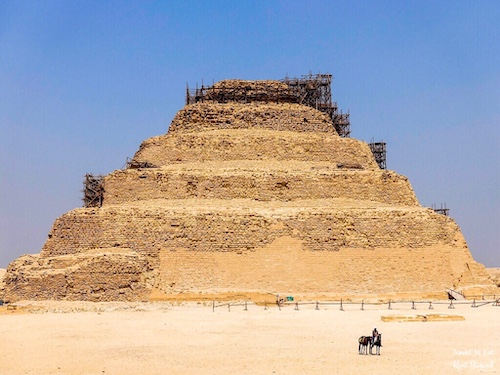
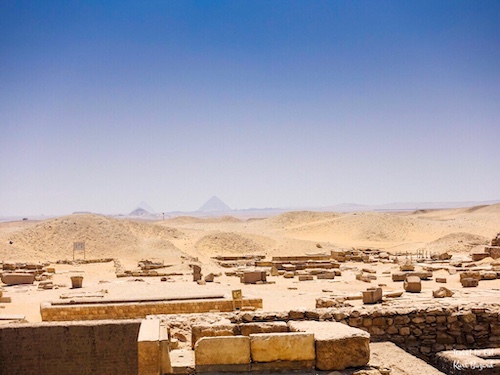
Because of its antiquity and its large population, Memphis had several necropoleis spread along the valley, including the most famous, Saqqara. In addition, the urban area itself consisted of cemeteries that were constructed to the west of the great temple. The sanctity of these places inevitably attracted the devout and the faithful, who sought either to make an offering to Osiris, or to bury another. At Saqqara, the oldest complete stone building complex known in history was built: Djoser’s step pyramid, built during the Third Dynasty (27th century BCE). Another 16 Egyptian kings built pyramids at Saqqara, which are now in various states of preservation or dilapidation.
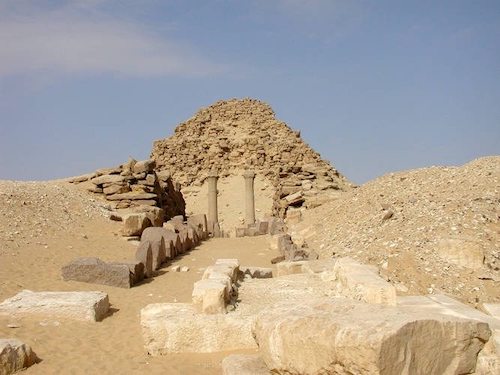
There are a total of fourteen pyramids at Abu Sir, which served as the main royal necropolis during the Fifth Dynasty. The quality of construction of the Abu Sir pyramids is inferior to those of the Fourth Dynasty, perhaps signaling a decrease in royal power or a less vibrant economy. They are smaller than their predecessors, and are built of low-quality local limestone.
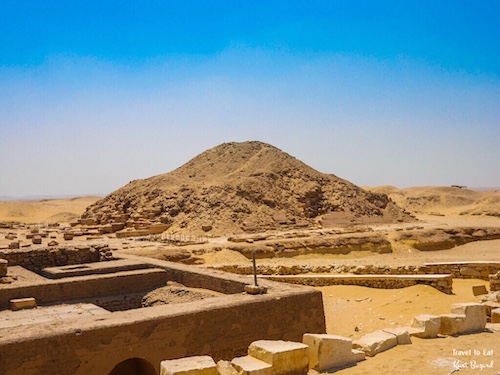
The Pyramid Complex of Unas is located in the pyramid field at Saqqara, near Cairo in Egypt. It was built for pharaoh Unas, the ninth and final king of the Fifth Dynasty in the mid 24th century BC. Its ancient name, Nefer Isut Unas, means “Beautiful are the places of Unas”. Originally reaching 43 metres (141 ft) high with a square base of 58 by 58 metres (190 ft × 190 ft), the pyramid is now completely ruined.
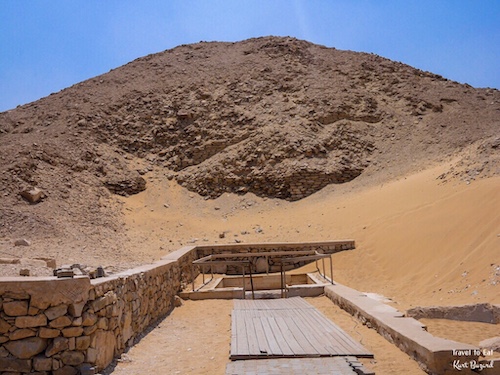
The Pyramid of Teti is a smooth-sided pyramid situated in the pyramid field at Saqqara in Egypt. It is historically the second known pyramid containing pyramid texts, the first being the pyramid of Unas. Excavations have revealed a satellite pyramid, two pyramids of queens accompanied by cult structures, and a funerary temple. The pyramid was opened by Gaston Maspero in 1882 and the complex explored during several campaigns ranging from 1907 to 1965. Teti ruled Ancient Egypt from 2323 till 2291 BCE and was the first king of the 6th dynasty. His wife, Queen Ipwet, is the daughter of King Wenis who was the last king of the 5th Dynasty. The queen was the mother of Teti’s heir, King Pepi I. Historians believe that she is the one that gave him the royal power. Almost all the major court officials of King Wenis remained in power during Teti’s reign.
End of the Old Kingdom
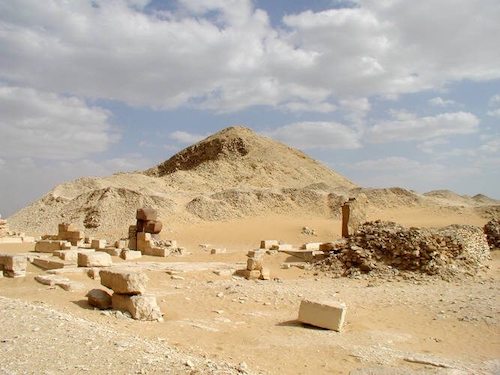
During the sixth dynasty (2345–2181 BC) the power of pharaoh gradually weakened in favor of powerful nomarchs (regional governors). These no longer belonged to the royal family and their charge became hereditary, thus creating local dynasties largely independent from the central authority of the pharaoh. As a result the pyramids of the fifth and sixth dynasties were considerably less impressive than their third and fourth dynasty counterparts. However, Nile flood control was still the subject of very large works, including especially the canal to Lake Moeris around 2300 BCE, which was likely also the source of water to the Giza pyramid complex centuries earlier. Pepi II is often mentioned as the longest reigning monarch in history, due to a 3rd-century BC account of Ancient Egypt by Manetho, which accords the king a reign of 94 years as the last king of the old kingdom. The foundations of Fustat and later Cairo, both built further north, were laid with stones of dismantled temples and ancient necropoleis of Memphis by the Romans and then the Arabs. In the 13th century, the Arab chronicler Abd-ul-Latif, upon visiting the site, describes and gives testimony to the grandeur of the ruins. I hope you enjoyed the post.
References:
Memphis: http://www.touregypt.net/memphis.htm
Memphis Museum: https://www.tripadvisor.com/Attraction_Review-g294201-d553170-Reviews-Memphis_Museum-Cairo_Cairo_Governorate.html
Saqqara: http://www.touregypt.net/sakkara.htm
Colossus of Ramesses II: http://www.touregypt.net/ramscol.htm
Pepe II: http://www.touregypt.net/featurestories/pepi2p.htm
Sent from my iPad

